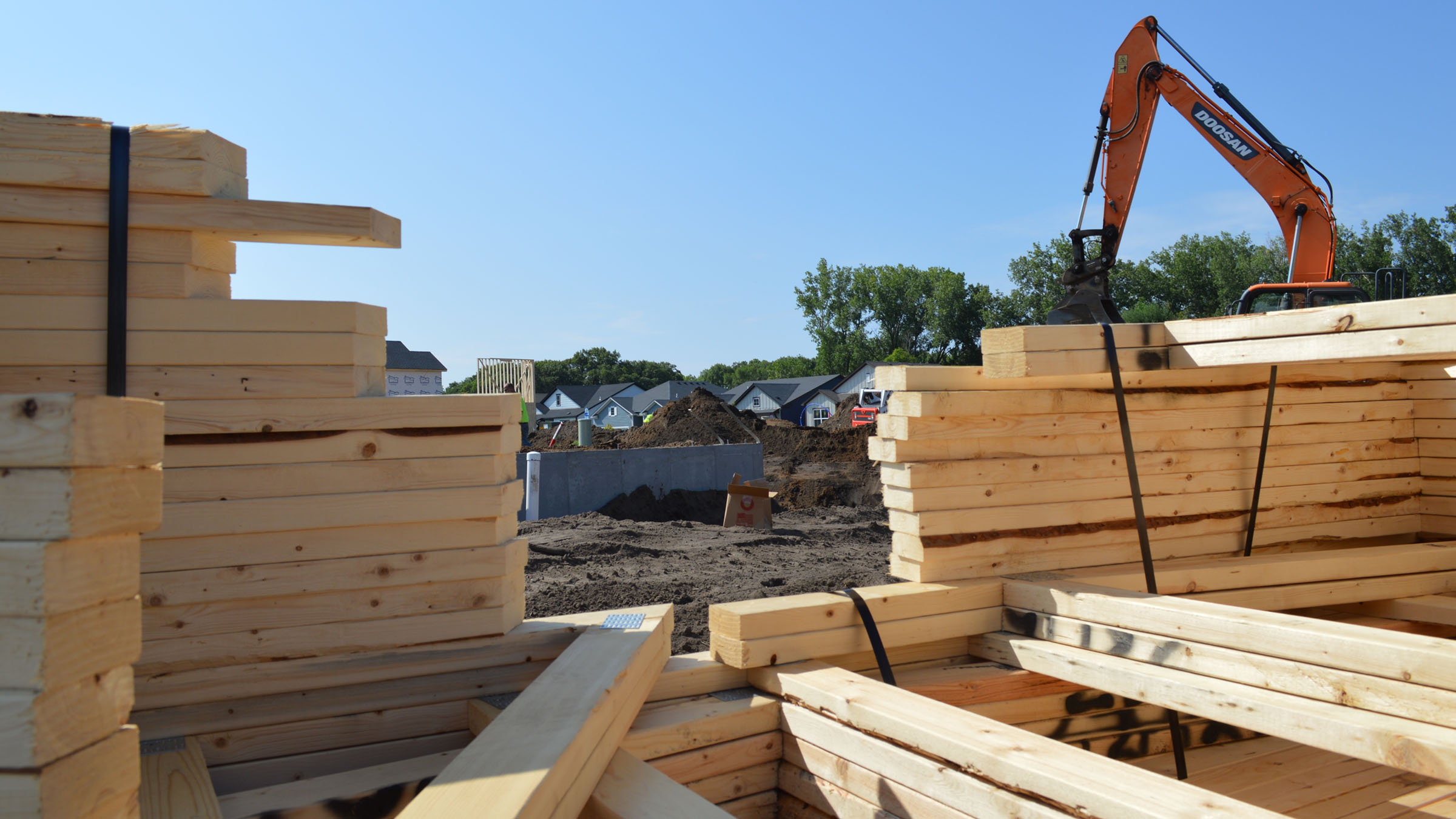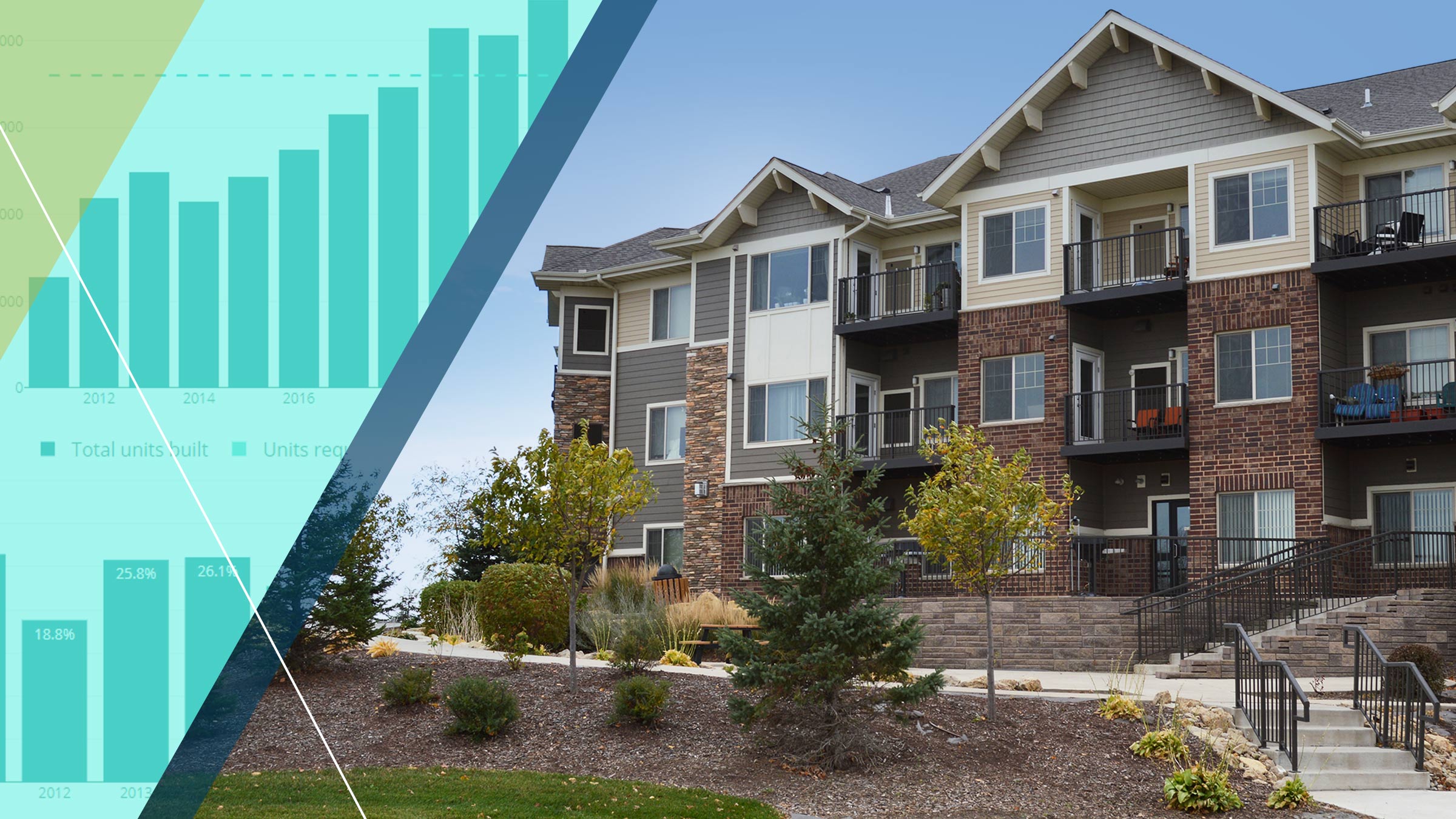For the second year in a row, the Twin Cities region met all three of the ambitious regional housing goals established in an interactive dashboard created by the Itasca Project and the Federal Reserve Bank of Minneapolis. In fact, through 2022, the region produced a record-high number of nearly 3,800 new affordable housing units—that is, units that are affordable to households earning 60 percent of the area median income (AMI).
In 2020, the Minneapolis Fed partnered with the Itasca Project’s Housing Affordability Task Force to create the Regional Housing Affordability Dashboard, which set three goals for the seven-county Twin Cities region:* supply 18,000 new housing units per year, meet the Metropolitan Council’s affordable housing goals (2,090 new units per year), and stay on track to match the national Black homeownership rate by 2030.
While meeting these goals two years in a row demonstrates momentum in the right direction, the region must continue to produce more housing over a sustained period of time. More supply will help the region meet demand and also help make housing costs more affordable. More affordable housing gives the region a competitive advantage. When rents and mortgages are financially out of reach, households are less financially stable, and employers struggle to find workers who can afford the cost of housing.
Goal 1: Supply 18,000 new housing units per year
Expanding housing supply is essential to achieve and maintain long-term, marketwide housing affordability. The Itasca Project’s Housing Affordability Task Force set an annual goal of 18,000 new housing units through 2030 to accommodate household growth and respond to the supply deficit created during the Great Recession. Achieving this level of housing development over an extended period of time would help slow the growth of housing costs.
With 21,673 new units permitted, 2022 marks the fourth consecutive year the Twin Cities region has met this goal. But the focus must continue. Up for Growth, a national housing advocacy group, estimates that the Twin Cities region needs an additional 76,500 units to reach an adequate housing supply. Although growth in housing costs has been slowing, the 12-month rolling median sales price calculated by the Minneapolis Area Realtors and Regional Multiple Listing Service of Minnesota reached a record high of $369,000 in October 2023.
Goal 2: Meet existing affordable housing production commitments of 2,090 units per year
In addition to growing the aggregate supply of housing, new affordable housing enables low-income households to minimize their housing cost burden—that is, to spend less than 30 percent of their income on housing. When households move into new market-rate housing, they free up previously occupied housing for those with lower incomes. For households that earn so little that any housing will consume an excessive share of their income, new affordable housing can create housing stability. From 2021 to 2030, goals set in collaboration between the Metropolitan Council—the regional policymaking body, planning agency, and essential-services provider—and local governments call for an annual average of 2,090 new affordable units, whether publicly subsidized or not, across the Twin Cities region.
In 2022, the region added a record 3,784 new affordable housing units, more than double the average annual production since 2011. However, far more production is needed. While the region has produced 29 percent of the 2021–2030 goal of 20,900 total units in the last two years, the need for new affordable housing remains far greater. The Metropolitan Council estimated the Twin Cities region would need nearly 38,000 new affordable units in the 2021–2030 period to meet expected growth. Even this estimate of the need for new affordable housing does not take into account the over 200,000 low-income households already in the Twin Cities region that are paying more than they can afford for their housing.
Goal 3: Match the national Black homeownership rate by 2030
The final goal calls for the Twin Cities region to match the national Black homeownership rate of 45 percent over the course of this decade. Across the United States, Black households have been locked out of homeownership opportunities by a long history of racial discrimination, including redlining, the destruction of Black neighborhoods, predatory lending, and challenges in obtaining mortgages. In 2022, the Twin Cities region’s Black homeownership rate was 32.8 percent, an increase of 2.6 percentage points from the previous year. While this is a move in the right direction, it is still more than 12 percent below the goal and less than half of the White homeownership rate of 75.0 percent.
How the Twin Cities compares to peer regions
In addition to measuring the Twin Cities region’s progress against the Itasca Project’s goals, the Regional Housing Affordability Dashboard monitors a wider range of indicators and compares the Minneapolis-St. Paul metropolitan statistical area (MSA) against 11 peer MSAs identified by GREATER MSP, a regional public-private economic development partnership. Housing in the Minneapolis-St. Paul MSA remains affordable compared to housing in our peer regions, but the region is severely underperforming in closing the disparity between Black and White homeownership rates.
Among the peer regions, only the Pittsburgh MSA is consistently more affordable than the Minneapolis-St. Paul MSA. Rents in the Minneapolis-St. Paul MSA, measured by the Zillow Observed Rent Index, are the second-lowest of the peer regions, and the region has the second-highest share of rental units affordable to households earning 50 percent of AMI. Despite an increase in the share of cost-burdened households, at 29.7 percent in 2022 compared to 27.0 percent in the previous year, the Minneapolis-St. Paul MSA still has the third-lowest housing cost burden, after the Pittsburgh and Charlotte MSAs.
Although the region surpassed its housing-production goal in 2022, the Minneapolis-St. Paul MSA falls in the middle of its peer group in residential housing units permitted per 1,000 residents. In 2022 this measure for our region was 6.7, just over one-third of the Austin MSA’s 18.1 new units per 1,000 residents. However, the growth in housing supply may have helped rent increases moderate. Based on Zillow estimates, rents in the Minneapolis-St. Paul MSA have increased at a rate lower than that of most of our peer regions. The region’s five-year change in the typical market-rate rent was among the lowest, second only to that of the San Francisco MSA, which has the highest rent.
In terms of overall homeownership rate, our region’s rate, 69.8 percent, was second only to that of the Pittsburgh MSA and by just 0.2 percentage points. However, our region’s disparity in homeownership rates between Black and White households continues to stand out. Among peer regions, in 2022 the Minneapolis-St. Paul MSA had the highest homeownership rate gap between Black and White households, at 44.4 percent. This was about twice the 22.4 percent disparity of the Austin MSA, the highest-performing MSA for this indicator.
Why we need to do more
Achieving goals two years in a row, combined with seeing the relative housing affordability of the Minneapolis-St. Paul MSA, could tempt the region to declare victory. However, doing so would be premature. We are measuring the Twin Cities region’s progress against goals over long periods of time precisely because the region needs sustained effort. And it needs policies that support housing production instead of policies that restrict new housing supply and ultimately drive up costs.
Explore the dashboard
The Regional Housing Affordability Dashboard provides data broken out by race and income, and displays indicators across both time and geography. The Minneapolis Fed refreshes all of the data in the dashboard at least annually.
Endnote
* The seven counties are Anoka, Carver, Dakota, Hennepin, Ramsey, Scott, and Washington.
Libby Starling is Senior Community Development Advisor in Community Development and Engagement at the Federal Reserve Bank of Minneapolis. She focuses on deepening the Bank’s understanding of housing affordability, concentrating on effective housing policies and practices that make a difference for low- and moderate-income families in the Ninth Federal Reserve District.








